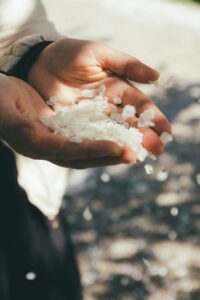Written by Wandile Sihlobo, Chief Economist at Agbiz
Export opportunities for South Africa’s agricultural products are opening up within BRICS+ countries. Over the past two years, China, the Kingdom of Saudi Arabia, and Egypt have widened market access for various agricultural products from South Africa.
Admittedly, Egypt and the Kingdom of Saudi Arabia have recently joined the BRICS+ grouping, and market access is part of the long-term bilateral engagements with South Africa. South Africa has access to selected fruits, wine, wool, meat and grains.
However, South Africa aims to broaden market access in BRICS+ for most of the country’s agricultural products. For this reason, through the 2023 BRICS Summit in Johannesburg and the prior engagements, South Africa prioritized trade as a significant point on the agenda for discussion. The political principals broadly agreed that deepening trade was necessary for the BRICS countries. Still, each country’s trade and agricultural authorities are responsible for taking the lead and seeking market access from member countries. The idea of a BRICS agricultural trade agreement that some argued for has not yet been thoroughly ventilated. The priority so far was for each BRICS member to work to reduce import tariffs and address the phytosanitary constraints for various products that BRICS member countries would present.
Even before adding the new members, the original BRICS countries were already significant importers of agricultural products. Between 2019 and 2022, this group’s agricultural imports averaged US$255 billion annually, according to Trade Map data. China accounted for 71% of all the agricultural imports into the group, followed by India at 11%, Russia at 11%, Brazil at 4% and South Africa at 3%. Despite these sizeable agricultural import figures, the intra-BRICS agricultural trade remained relatively low.
The products these countries imported include soybeans, beef, maize, berries, wheat, palm oil, poultry meat, cotton, barley, dairy products, pork, apricots and peaches, sugar, wool, sunflower seed, nuts, sorghum, goat meat, wine, grapes, bananas, avocados, mangoes, guavas, and fruit juices, among other products. South Africa produces some of these products in abundance and has surplus volumes for exports. Thus, the country championed a need to deepen trade in the 2023 BRICS Summit.
Admittedly, the positive reception that South Africa has received from some BRICS countries lately is not entirely because of the groupings’ focus on trade. Indeed, some discussions regarding market access to China have been underway for some time. Still, when agricultural trade is prioritized in various political forums, there is naturally urgency to deliver some results.
With BRICS adding new members to form a bigger BRICS+, the agricultural trade opportunities have increased. The Kingdom of Saudi Arabia and Egypt are some of the newest members. These two countries present enormous opportunities for widening South Africa’s agricultural exports. Egypt spends approximately US$16 billion a year importing agricultural products from the world market. These are mainly wheat, maize, soybeans, palm oil, beef, apples and pears, dairy, cotton, potatoes and tea, among other products. It is here that South African grain farmers, traders, and beef producers should focus on increasing exports. Egypt even took the initiative of visiting South Africa at the start of this year in search of maize imports. The Department of Agriculture, Land Reform and Rural Development, and the South African Cereals and Oilseeds Traders Association were at the forefront of the engagements.
Similarly, the Kingdom of Saudi Arabia’s agriculture minister and senior leadership in agriculture visited South Africa earlier this year in search of grains and beef imports. The South African government authorities and industry also used the opportunity to showcase the various fruits South Africa could export to the Kingdom. South Africa also raised the investment opportunities in the domestic business community that the Kingdom of Saudi Arabia could explore. In the same view, China is steadily opening its markets for some South African agricultural products. With that said, there have been times when China has unfairly restricted South Africa’s wool exports. This issue has now been resolved, and there is a unique protocol for handling wool exports, even during animal disease outbreaks.
Russia is now the global chair of the agribusiness working group, having taken over from South Africa. Encouragingly, “deepening agricultural trade” amongst the BRICS+ community remains on the agenda for the year. During the year, the newly added members will also add their views on the working agenda of the agribusiness working group, which will later in the year be presented to the political leadership of the grouping. We believe that trade will remain on the agenda. If anything, some member countries will push for widening trade to include agricultural inputs. From a South African perspective, this would remain beneficial as the country imports most of its farming inputs, such as fertilizer and agrochemicals.
Overall, while BRICS+ remains a political grouping with no formal trade structure, the bilateral agreements between BRICS+ countries for increasing trade are encouraging. South Africa will continue prioritizing the widening of agricultural exports in this grouping. Still, such efforts will not be at the expense of robust markets in Europe, Africa, the Americas, Asia, and the Middle East. South Africa’s agricultural sector still has room to grow, and trade is essential to the sector’s growth strategy.
The article originally appeared in the Agbiz newsletter, 9 May here.
Photo by Kurt Cotoaga on Unsplash



